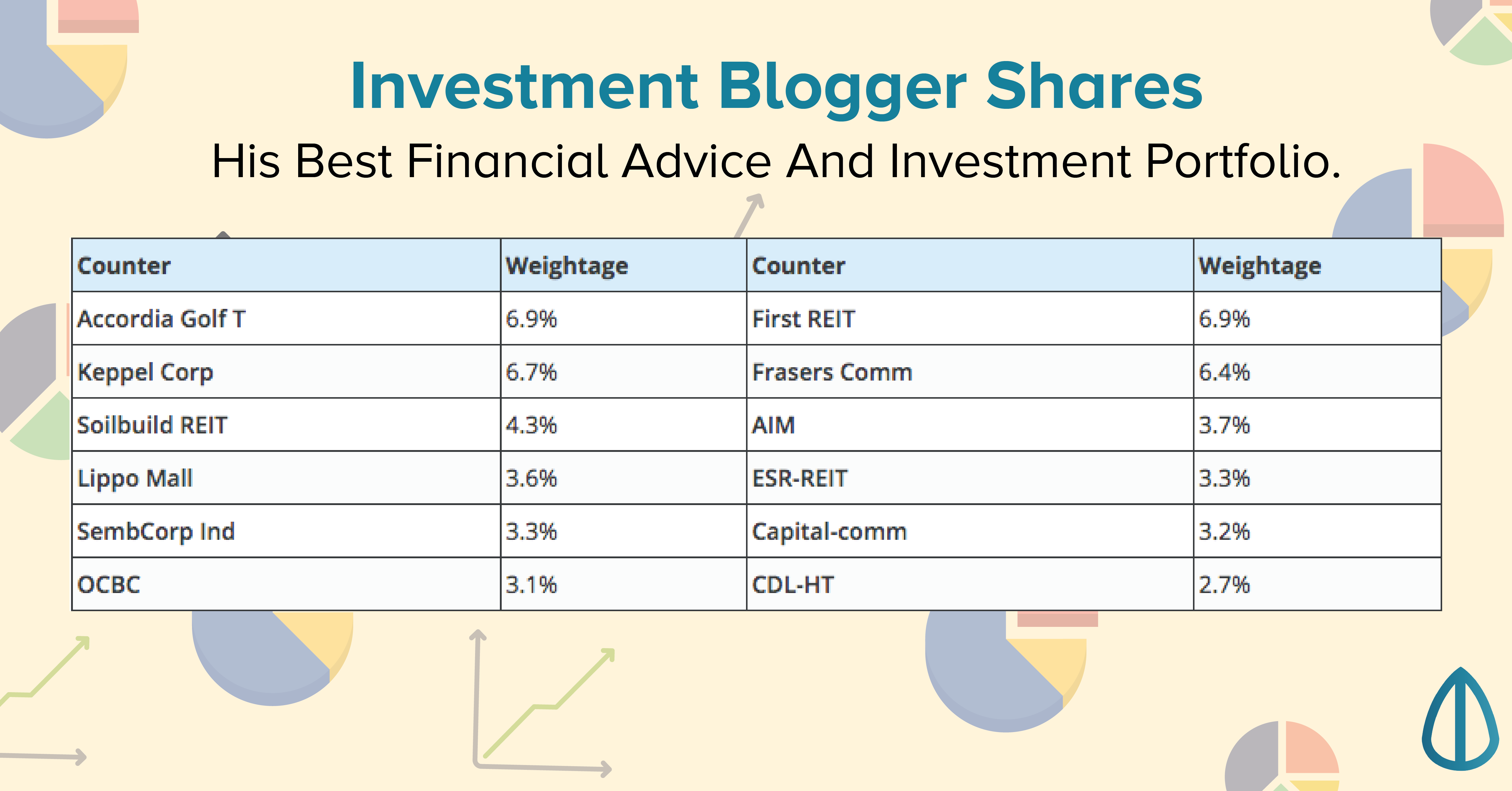Advertisement
Anonymous
Is Ray Dalio's All Weather Portfolio suitable for absolute beginners with no practical investing experience? How to go about implementing it from scratch?
6
Discussion (6)
Learn how to style your text
Paridhi Jhunjhunwala
03 Dec 2019
Associate at Kristal.AI
Reply
Save
Chuin Ting Weber
07 Jun 2019
CEO and CIO at MoneyOwl
Hi Anonymous, this is Chuin Ting Weber, CEO & CIO of MoneyOwl. I infer from your question that you are thinking of implementing the strategy of Bridgewater/Ray Dalio's "All Weather Portfolio", namely, the strategy of Risk Parity.
To re-cap quickly on Risk Parity: in traditional asset allocation, you allocate according to asset classes, e.g. 50% equities and 50% bonds. In risk parity, conceptually, you allocate according to risk. For example, if you thought that equities were twice as risky than bonds, then one way of doing risk parity would be to allocate much less to equities and much more to bonds. A usual proxy for risk is volatility. But this is probably too simplistic for most funds. For Bridgewater, All Weather was meant to be a systematic, "automatic" way of investing. All Weather allocates to assets that respond differently in four environments (hence "weather"), namely, combinations of rising growth, falling growth, rising inflation, falling inflation. 25% of risk is allocated to asset classes that perform well in each (this is all on Bridgewater's website):
- Rising growth: equities, commodities, corporate credit, EM credit
- Rising inflation: inflation-linked bonds, commodities, EM credit
- Falling growth: nominal bonds, inflation-linked bonds
- Falling inflation: equities, nominal bonds
The idea is that the returns are not cancelled totally and net returns are more than cash over time.
Some roboadvisors, e.g. WealthFront, have introduced risk parity ETFs. There is even one roboadvisor that also uses the term "All Weather".
I have the following difficulties with recommending All Weather/ Risk Parity as a main strategy for investors.
- What is the motivation behind why we want to have a risk parity portfolio rather than a traditional portfolio? All Weather is a beta strategy. Meaning it moves with the markets. But because of risk parity, in rising markets, it will underperform say, a 60/40; but in falling markets, it will perform less bad. being beta, it does not return positive if the reasons markets fall are risk premiums rising and discount rates rising. (That's why Bridgewater came up with Optimal portfolio with an "alpha" element in 2015, but that has its own issues as well.) It would seem that the objective of risk parity is to achieve higher risk-adjusted returns as a whole over time. As far as investment lingo goes, that seems to be a very decent objective. But from a personal financial planning point of view - can you "consume" risk-adjusted return? I would say no, as what matters is the actual return and whether it can help you retire. And what actually is risk? Risk is often proxied by volatility. If you do not have the capacity or willingness to take the volatility of say, a 80/20 fund, why not then have a more moderate portfolio with less equities?
- Following from this point, I do not know what is the expected return of Risk Parity and therefore I do not know whether or not it will meet your need for return, because Risk Parity is not an asset class. Of course there is a return target, but that is just a target by managers. There are many different ways to implement Risk Parity and the ultimate returns you get will be very dependent on the individual manager or investor's active decisions. Even though Bridgewater's system is supposed to be quite automatic, I suspect that most managers (or investors ourselves if we try to implement from scratch) will have to make multiple active calls/decisions to implement, and managers will want to try to read the macro market to "overweight" and "underweight" and choose which EM credit depending on macro environment, and change them around to beat the market. After all, if it does not beat the market, why would investors pay higher fees than say, indexed funds? For those of us in Singapore, just the issue of what you do with the foreign currency exposure - given that many instruments are not avialable locally - will be another decision, because it actually adds foreign currency risks, which you should "pare" out also.
- Costs involved in implementation are likely to be very high. If you want to implement from scratch, the number of securities you have to buy will be very large and there will be frictional costs for small portfolios. When you want to rebalance the risks, it is going to be complicated, you have to run through a model and then buy and sell - there will be costs. Of course, you can check out the ETFs, but these costs for active funds will generally be higher than for passive ones - the question is whether it is worth it in terms of net returns.
Perhaps we can take a leaf out of the book of institutional investors. I have said that "risk parity" is a strategy and not an asset class. What is an asset class is "hedge funds" in general (or you can say it is a sub-asset class under the asset class called "alternatives"). Bridgewater is such a hedge fund. Institutional investors do allocate to hedge funds, but usually limit exposure, e.g. university endowment funds that have a long investment horizon will go for say, 20% in alternatives, and generally not more than 5% in each fund or strategy. The thing is, hedge fund performance is really dependent on manager skill and included in the portfolio generally because it gives uncorrelated return to traditional asset classes, but there is often a question if the return is not just leveraged beta - and All Weather is indeed beta. For me, it is really a question mark over whether fund managers can perform consistently over the long term to beat the market. Over the past years, for all the trouble that fund managers go to and all the costs, it has been very hard to beat the market especially on a net basis.
So if you wish to try it out, maybe you can consider a small percentage of your portfolio in this strategy, but bear in mind the implementation problems mentioned above especially if you do not have a lot to start with.
But for your main portfolio, from a financial planning point of view, the portfolio that you invest in to help you accumulate wealth should be based on your (1) need to take risk (what is your required return, e.g. to fund your retirement) (2) ability to take risk and (3) willingness to take risk. For most of us, a globally diversified portfolio comprising of equities and bonds should suffice. Less is more when it comes to investing. Find the correct asset allocation for you such that you can bear short-term volatility without panicking and selling off, search for portfolios that put this asset allocation together using low-cost funds that do not time the market, and capture market-based return by staying invested over the long term. That would probably be the best bet for your investing experience and for your financial goals.
All the best!
Chuin Ting Weber
Reply
Save
Ray Dalio gave a sample portfolio, a simplifed version for beginners, so YES it is suitable.
There...
Read 2 other comments with a Seedly account
You will also enjoy exclusive benefits and get access to members only features.
Sign up or login with an email here
Write your thoughts
Related Articles
Related Posts
Related Posts
Advertisement










Hi!
As a new investor, Ray Dalio's All Weather Portfolio is actually a suitable strategy. The strategy ensures stable returns in good and bad economic conditions by deploying a balanced and diversified portfolio so that you are not over exposed to a particular asset class.
At Kristal.AI, we have further classified the strategy into an unleveraged and an aggressive all weather strategy. The Unleveraged Strategy is available to all investors and has geographical exposure to the United States. The Aggressive Strategy, on the other hand, has the same geagraphical exposure but makes use of leverage to have enhanced returns. This strategy is only available for accredited investors due to the higher risk and complexity of the product.
Hope this helps! Happy investing!